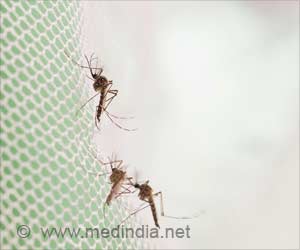A farmer in India, from the village of Shivani has recently been identified as the first confirmed case of human trypanosomiasis recorded in this country
The first case of human trypanosomiasis has now been discovered in India. Sleeping sickness or Human trypanosomiases is endemic in Africa and in South America, where it is called Chagas disease.
A farmer in India, from the village of Shivani (district of Chandrapur) 140 km from Nagpur in the central State of Maharashtra, has recently been identified as the first confirmed case of human trypanosomiasis recorded in this country.Human trypanosomiases in Africa is caused by Trypanosoma brucei gambiense and Chagas disease in South America is induced by T. cruzi. In other regions of the world such as India, only animals were up to now known to be infected by certain trypanosomes, which are not pathogenic for humans.
In December 2004, a researcher from the IRD centre in Montpellier, a specialist in the African form of human trypanosomiasis (sleeping sickness), undertook the identification of the pathogenic agent, at the request of the Indian authorities and mandated by the WHO in collaboration with local medical services (1). Morphological examination of parasites contained in the patient’s blood revealed the presence of many trypanosomes belonging to the species T. evansi, which usually infects animals, particularly cattle.
The patient, who had been suffering for several months from recurring bouts of fever, had very high blood parasite count, equal or greater than 106 parasites/ml of blood. Parasitological, serological and molecular analyses confirmed this result. It is the world’s first formally identified case of human trypanosomiasis caused by T. evansi. This trypanosome, which was first identified in 1881 India, in the Punjab, in the horse and Bactrian camel, usually causes a disease called 'surra' in bovines and camel species. Although cases of human carriers of animal trypanosomiases were recorded during that century in India, Sri Lanka and Malaysia, these have either never been formally demonstrated or were only very short-lasting infections.
The patient showed no nervous system damage, indicating an early stage of the disease and the researchers could start treatment. Injections of sodium suramine, a medicine usually used in cases of African T. b. rhodesiense trypanosomiases at the same stage, steadily improved the patient’s health (2).
The patient, who works in permanent contact with animals, had a cut in his hand when he was admitted to the health care centre. Consequently, he was probably infected directly into the bloodstream from an animal infected with T. evansi. However, that does not exclude another indirect, mechanical infection pathway, by way of blood-sucking insect for example. An insect vector is involved in transmission of both sleeping sickness and Chagas disease (3).
Advertisement
Source-Eurekalert
PRI/M






